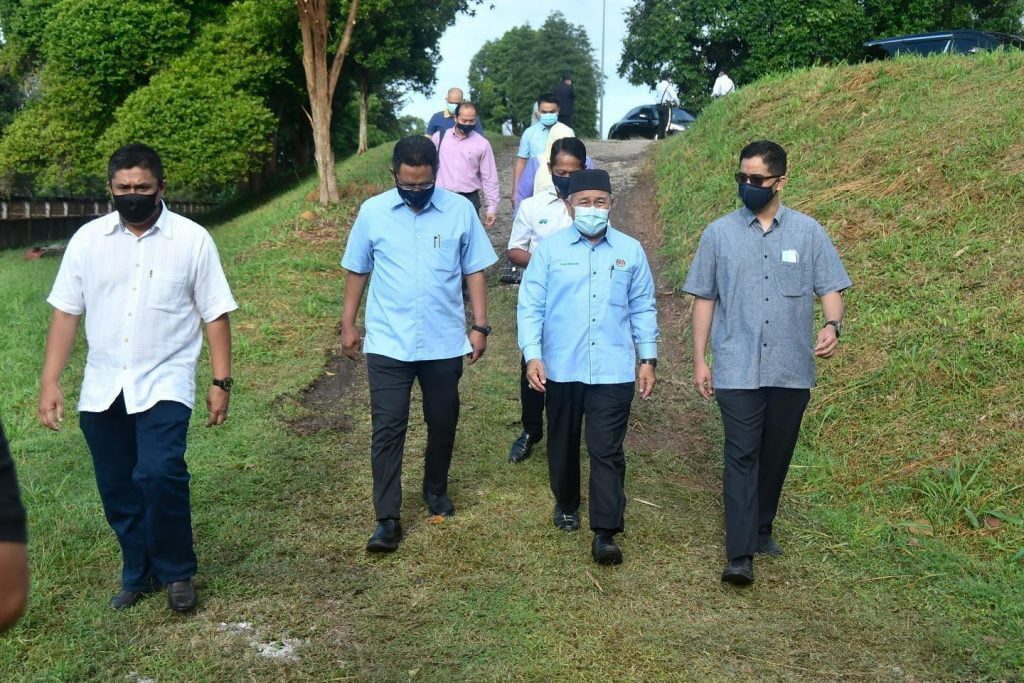7 strategies of Malaysia OSHMP25 in managing OSH.

7 Strategies Of Malaysia OSHMP25 In Managing OSH. In light of the COVID-19 pandemic, emphasis on occupational health has seen new light and OSHMP25 provides the platform for enhancing and integrating these services to be inclusive of the current requirements such as the new norms which should be practiced at the workplace and also out of the workplace.
According to MNKKP chairman, YB Datuk Haji Awang bin Hashim in order to further strengthen the system OSH in our country, the Government launch OSHMP25 which will focusing on the application of values Inclusive KKP togetherness and commitment to encourage the participation of all parties in succeeding in this national mission.
In this article, we are going to discover the role of the 7 strategies of Malaysia OSHMP25 in managing OSH.
Table of Content:
1. OSH empowerment in the public sector
(MNKKP) aims to take more aggressive steps to intensify again, its role in increasing the engagement and multi-agency cooperation from both the public sector and the sector private as well as each party that interested through input ideas and suggestions in strengthening the management and state OSH governance.
In order for this strategy to be implemented, few programs have been constructed:
- Uphold OSH policies and legislation.
- Strengthen the function of MNKKP.
- Government as the OSH initiator.
Few activities have been proposed for this strategy:
- Strengthen OSH in the public sector through KSN.
- Incorporate OSH criteria into procurement in accordance with the 2015 Contract Management Guidelines and the terms of the company’s operating license.
- Establishment of Excellent Center for OSH (COE) in form of arrangement of DOSH SME posts into a special section.
- Continue to provide incentives and recognition to employers and employees who excel in comply with OSH related legislation.
The objective of this strategy is to empower the government as the key drivers to change and implementation of OSH improvement in Malaysia. It requires a cooperation between the government and each interested party to play role in the success of this master plan according to their respective expertise in order to be in line with changes in OSH technology at the global level. The safety and health of workers must be a priority in order to be able to improve employee welfare and productivity.
2. Building OSH Self-Regulation Culture at workplace
The culture of practicing the correct OSH at work is an approach which can help to improve work productivity and so on can stabilize and balance Malaysia’s economy. Work activities can be implemented regularly and systematically, starting from the design aspect up to the implementation of OSH daily activities.
In order for this strategy to be implemented, MNKKP believe that the practice of:
- Collecting the holistic accident prevention interventions with employee involvement.
In order for this strategy to be implemented, few programs have been constructed:
- OSH ownership and leadership.
- Systematic implementation of self-regulation.
- Improving OSH best practices through interventions at work.
- Readiness of employee self-regulation.
MNKKP strongly believe that, by strengthening the practice of systematic self-regulation will eventually strengthen the readiness of employers’ self-regulation and workers.
3. Promoting OSH research and innovation
MNKKP positively believe that OSH education and research is important in ensuring every employee gets training and adequate exposure about KKP in addition to stabilizing again the OSH research agenda reflects the state's commitment to keep improving or improving existing capabilities through research high quality.
MNKKP believe on this as OSH education and research will give positive impact to:
- Raise awareness, education and engagement community in OSH.
- OSH competencies and capabilities in the workplace.
- Cultivating OSH Research and Development.
This strategy can be implemented by:
- Making OSH as one of the priority areas in the framework research and development country.
- Coordinate research activities OSH for all universities/ centers research.
High-quality OSH education and research will guarantee the continuity of the national OSH agenda due to its nature which is capable of providing more long-term returns.
4. Harnessing OSH Compliance at Workplace
Employees are at risk of getting injuries and illnesses due to the exposure to various hazards in the workplace. As e.g., chemical hazards, physical hazards, biological hazards, ergonomic hazards, and psychosocial danger. This situation can exacerbate health problems existing ones faced by employees.
In order for this strategy to be implemented, few programs have been constructed:
- Providing occupational health practitioners who competent in the workplace to improve performance and access to occupational health services.
- Comprehensive OSH risk management.
- Increase awareness and haring of related Occupational Health and Occupational Diseases information.
- Empowering Industrial Hygiene towards improvement quality of work.
- Integrate risk assessment occupational health.
His strategy is aimed to empowering Occupational Health in various strata of society especially by improving the assessment, reporting, and management in among employers, employees, and OSH practitioners. Besides, the development of an Occupational Health data repository collect Health-related employee data will be able to produce a database system in detail and thorough.
5. Increased OSH compliance in the SME sector
SME sectors contribute almost 97 to 99% of the total the entire business firm in Malaysia and accounted for about 36% of GDP and is expected to increase to 41% by 20208. Continued growth of SME contributions against GDP shows importance this sector in the Malaysian economy. PKS have also been reported to contribute between 30 to 50% accident rate at work.
In order to reduce this numbers, MNKKP have planned to:
- Give a special Incentives for the SME Sector for OSH Activities.
- Strengthen the SME OSH management system.
- Strengthening support and cooperation between agencies as well as special program initiatives.
- Improve knowledge, skills and OSH commitment.
As SME representing the majority (98.5%) of the business population with a contribution of 38.3% to GDP overall, SMEs in Malaysia are indeed the most important sector in driving the country’s economy. The main issue that is often faced by the SME sector in Malaysia is problems of financial resources, lack of technical aspects, and company management problems. In addressing this issue, strategies, programs, and activities have been specially developed to enhance and expanding OSH practices in the SME sector for five years.
6. Consolidation of OSH through technology
(OSH) can be reinforced again with using a variety of the latest technologies which are increasingly being on the market. The use of the latest technology is not only can be utilized from a technical aspect such as the use of more machines sophisticated and safe, but can also utilized from various aspects another. Use of the latest technology if used in the right way, will increase the effectiveness of OSH from
every aspect.
In order for this strategy to be implemented, few programs have been proposed:
- IR 4.0 Centered Smart Workplace Development.
- Development of Technology Ecosystem in OSH.
- OSH Risk Management Through Digital Technology.
MNKKP also have suggested two activities that are believed to be effective for this strategy:
- Creating/ improving the system management of OSH requirements fundamentals digitally.
- Upskilling OSH practitioners use the system digital (whether the existing system is provided by DOSH or build your own) for the sharing of relevant information OSH for monitoring by the authorities especially for high-risk sectors.
Although the use of technology in OSH is possible spend a lot of money, it will still bring long-term profit as a result of cost reduction caused by accident, property damage, and death.
7. Work Related Road Safety-Trends and Drivers Shaping E-Hailing Industry
MNKKP have constructed few programs in order to implement his strategy:
- Strengthening awareness and sensitivity of OSH practices for future jobs.
- Strengthening awareness and sensitivity of OSH practices in the e-hailing service.
- Strengthen relevant road safety management Jobs (WRRS).
- Improvement of OSH in the informal sector.
The objective of this strategy is to create awareness and understanding of OSH at various levels society especially among economic gig performers. Emphasis is also given to creating relevant legislation security of this new sector, as well as management -based initiatives smart systems among employers, employees, and OSH practitioners. Objective the next is to create a network of expertise between the holder’s bets involving OSH practices in the gig economy sector. Besides, good accident prevention control measures are tried to be established to protect the safety of gig economy players.
OSHMP25: Expectation
A paradigm shift towards the culture of the OSH more brilliant and foremost. This coincides with the security core and structured occupational health by the government at the national level and by global agencies, as well as high sensitivity to issues related to OSH at the level of department and country.
It is hoped that within these 5 years, all parties will participate and play their roles in order for Malaysia to be better in managing OSH.








